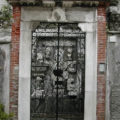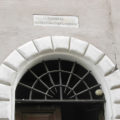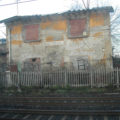I hope that my friends and relatives have forgiven me for the fact that I have never mailed presents to them from Italy. I either have something shipped directly from a company in the US, or I wait til I’m in the US myself, preferably actually visiting the person in question, to give gifts.
This is because I hate the Italian post office, which symbolizes all the worst of Italian bureaucracy: poorly organized, sluggish, and completely uninterested in self-improvement.
Part of the problem is that it tries to do too many things. As in other European countries, in Italy the post office functions as a kind of government bank, where pensions are withdrawn and some types of payments to the government are made, e.g. the annual television tax, and fees for school lunches. It is also possible to make payments to third parties, such as utilities, via the post office.
As you can imagine, this banking function leads to long lines, especially during the early part of the month when all the retirees show up to collect their pensions. And, in the early years, it somehow never occurred to anybody in authority to separate postal functions from banking functions: same line, same window, whether you were paying a bill, collecting a pension, or just trying to mail a letter.
If you only needed to mail a letter, you could always buy stamps at a tabacconist. But registered letters could only be registered at the post office, and, given the unreliability of the delivery service, it was necessary to register anything whose delivery you actually cared about. Once, after standing in line for half an hour behind little old ladies carefully counting their coins, I asked the man why they didn’t have a separate window for just plain post. He gave a bored shrug. “This is the way it’s done.”
Yet, six months later, they started doing it differently: suddenly we had one window for any kind of mailing, one for stamps only, and three for banking. At first I heaved a big sigh of relief, but I soon realized that they had assigned the dimmest bulb in the office to the post window. It would take him ten minutes to figure out postage (they were still doing it by hand then) and fill in (again by hand) his part of the registration form. Sometimes he gave me the wrong form, so I would have to fill things out twice. Once, on a very urgent item, he called me when I had returned home and told me I’d have to come back and pay more, because HE had made a mistake on the postage. And he wouldn’t send this urgent letter until I’d come back and paid.
The banking function didn’t work so well, either. Each payment slip had three portions: one that vanished into the system (although the transaction was also recorded on a computer somewhere), one that you gave to the payee to prove you had paid, and one that you were supposed to keep. Unfortunately, I did not realize how critical it was to keep these receipts for the rest of your natural life. We were dunned for payment, three years after the fact, for three months of Rossella‘s 5th grade school lunches. I had entered into our home accounting system the date that these had been paid, in a single transaction, but had not kept the receipt to prove it. Enrico spent days in postal administrative offices all over Milan – the system was centralized enough to accept payment from anywhere, but not enough to allow the local branch to trace a payment that they had taken. The amount of money was not huge, but Enrico got stubborn about it, and eventually prevailed.
Another fun thing about banking in the post office is that it means that, during the early part of the month, a relatively insecure office is holding enormous amounts of cash, and doling it out to tottery old ladies. This leads to regularly-scheduled muggings and fleecings of old people just outside the post office, and to the national sport of post office robbery. I once arrived at our local PO in Milan to find a robbery underway, with a huge crowd milling outside to see what was going on. I hightailed it in the other direction.
The good news is that global competition has affected even the Italian postal system. Mail now arrives more quickly and reliably than it ever has in the past, and many post offices have become sleek, computerized, and almost a pleasure to be in. It’s no longer necessary to register everything; priority mail seems to be fast and trustworthy.
Now I’m making a real test of the system: I mailed my first-ever package from Italy, to my mother, a few weeks ago. It was a heavy book, so I didn’t send it priority, and I’m therefore not surprised that it hasn’t arrived yet. If it eventually gets there, I’ll be pleased, and maybe not even too surprised.
Feb 22, 2004 – I am happy to report that my mother received her book a day or two after the above went out.
Feb 23, 2006
I must say, the Poste Italiane are really modernizing. You can do a lot of stuff online now (such as track a registered letter), and their site even has an English version.











